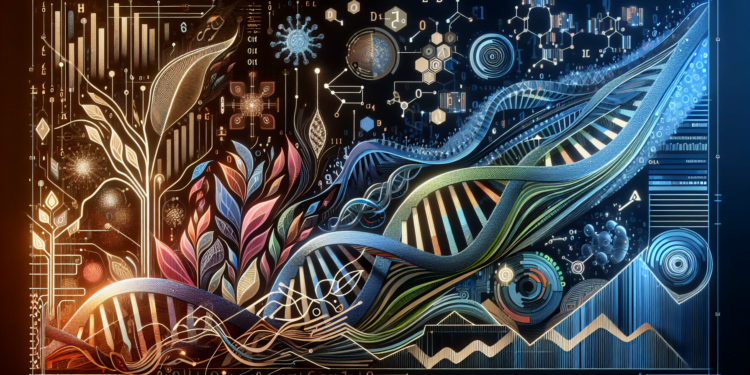Genetic algorithms (GAs) are a powerful and diverse branch of the artificial intelligence (AI) field, inspired by natural selection and Darwin’s theory of evolution. Their ability to optimize solutions and efficiently explore large search spaces has positioned them as indispensable tools in various applications, ranging from software engineering to biomedicine.
Introduction to Computational Evolutionary Theory
The foundational principles of GAs rest upon encoding potential solutions to a specific problem in structures called chromosomes. Each chromosome, equivalent to an individual in a population, contains a set of genes that represent the decision variables of the problem. These genes can have a binary, real, or even more complex structures depending on the nature of the problem.
The creation of an initial population commences a cycle of evolution guided by genetic operators: selection, crossover, and mutation. Selection favors the reproduction of individuals with better adaptation—quantified by a fitness function—allowing their characteristics to predominate in subsequent generations. Crossover or recombination exchanges chromosome segments between pairs of individuals, producing offspring with mixed characteristics. Mutation introduces random variations in the genes, preserving genetic diversity and enabling the emergence of new solutions.
Recent Advances in Genetic Algorithms
The introduction of hybrid approaches and enhancements in traditional GAs has resulted in significant advances in the efficiency and effectiveness of these algorithms:
- Advanced Encoding Strategies: Experimentation with different coding schemes, such as permutation representations for ordering problems or tree structures to suit the nature of specific problems, has been underway.
- Adaptive Methods: GAs with adaptive parameters dynamically adjust the crossover and mutation rates, improving convergence towards global optima and preventing premature stagnation.
- Multi-objective Optimization: Algorithms like NSGA-II and SPEA have enabled GAs to tackle problems with multiple objective functions, providing a set of compromise solutions known as the Pareto front.
GAs have evolved to incorporate niche mechanisms, such as “crowding” and “speciation,” to maintain diversity and simulate the co-evolution of species. The incorporation of concepts from game theory in Coevolutionary Genetic Algorithms has enabled simulations of competitions between solutions, facilitating the rise of more robust strategies.
Emerging Practical Applications
In biotechnology, GAs are applied to discover new DNA sequences with desirable properties. In robotics, they contribute to the generation of adaptive behaviors in unstructured environments. The growing importance of AI in finance has seen GAs used for portfolio optimization and in the development of algorithmic trading strategies.
Software system design has also benefited from GAs for code optimization and automatic test generation. GAs are being integrated into neural network optimization, selecting architectures and hyperparameters that enhance performance in deep learning tasks.
In the energy sector, GAs enable the optimization of resource distribution in smart grids and maximize efficiency in the generation of renewable energy. The interoperability and ongoing evolution of GAs make them favored tools for tackling optimization in the Internet of Things (IoT), where complex multilayered systems with real-time requirements are managed.
Case Studies and Comparisons
Recent studies demonstrate how GAs significantly improve process efficiencies. A pertinent case involves optimizing delivery routes in logistics, where the application of GAs outperformed traditional heuristic methods in terms of time and accuracy. Another example is the automatic parameter setting in integrated photonics, where a GA outdid conventional optimization methods in achieving devices with improved optical transmission features.
Future Directions and Innovations
The future of GAs seems to be headed toward even closer integration with other AI areas. The combination of the evolutionary power of GAs with the generalization and pattern recognition capabilities of deep neural networks suggests a new class of adaptive and intuitive systems. Experiments in this convergence are already showing promising developments in the field of computer vision and natural language processing.
Research into quantum GAs poses the possibility of exploring solution spaces of magnitude previously unattainable. With quantum computing, massive parallel searches could lead to accelerated convergence towards optimal solutions.
Conclusion
GAs represent a vibrant and continually evolving field within AI. The adaptability, robustness, and inherent parallelism of these algorithms position them as fundamental tools in solving complex problems. As technology progresses, we can anticipate the emergence of more sophisticated and specialized GAs capable of addressing the most pressing challenges of our era. The contribution of this algorithmic approach to the advancement of science and technology promises to redefine the boundaries of what’s possible in the decades to come.






















